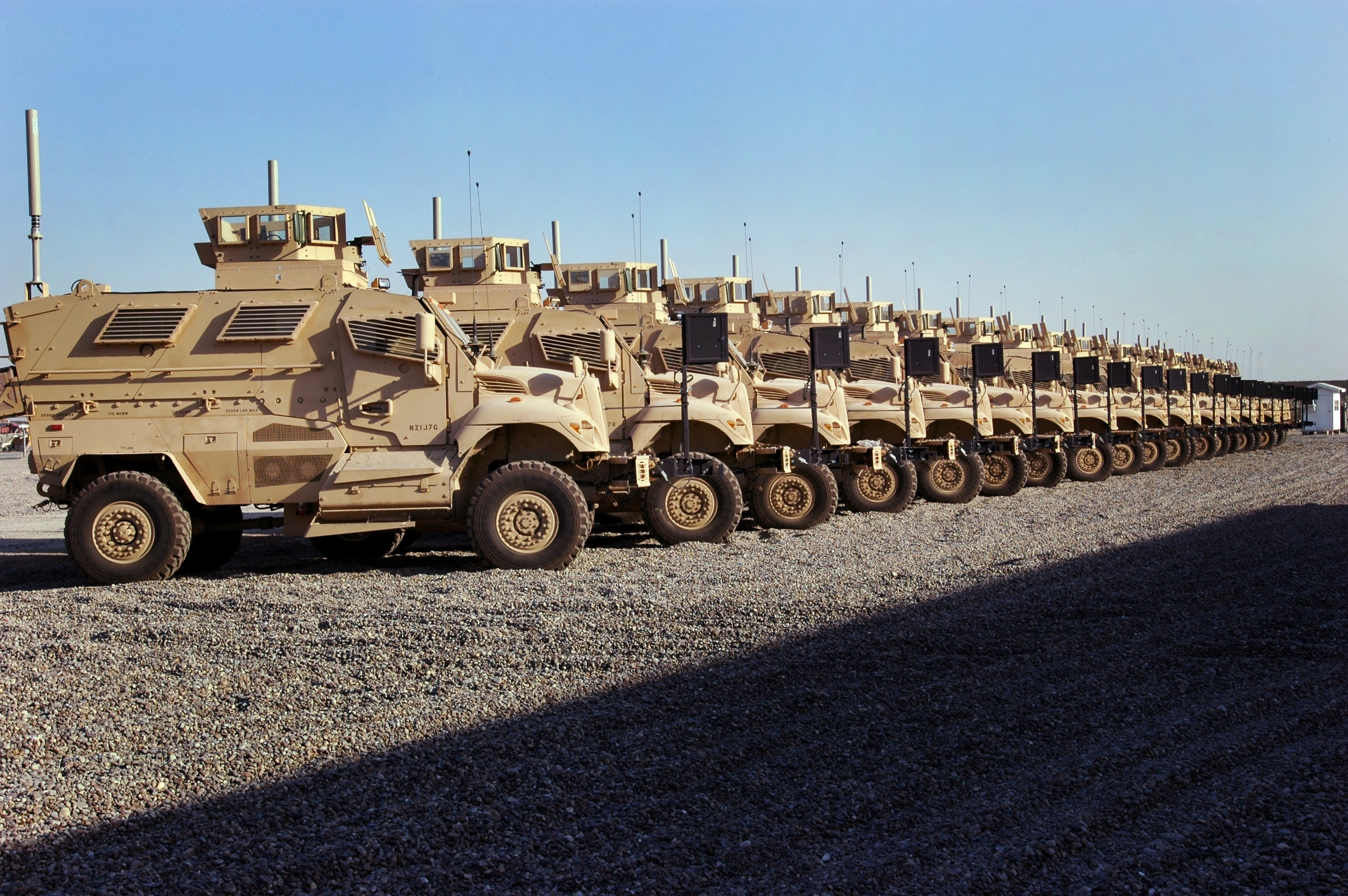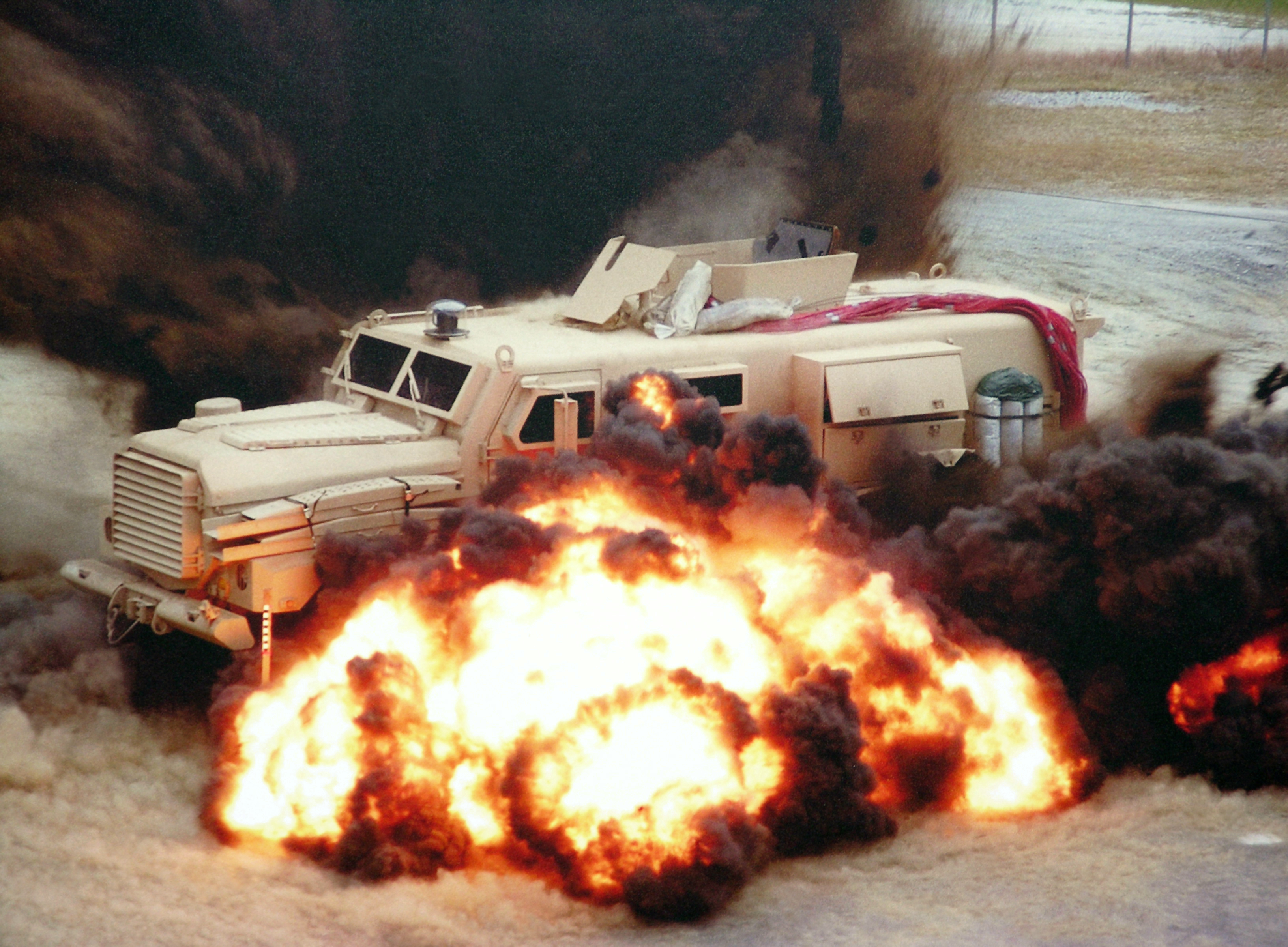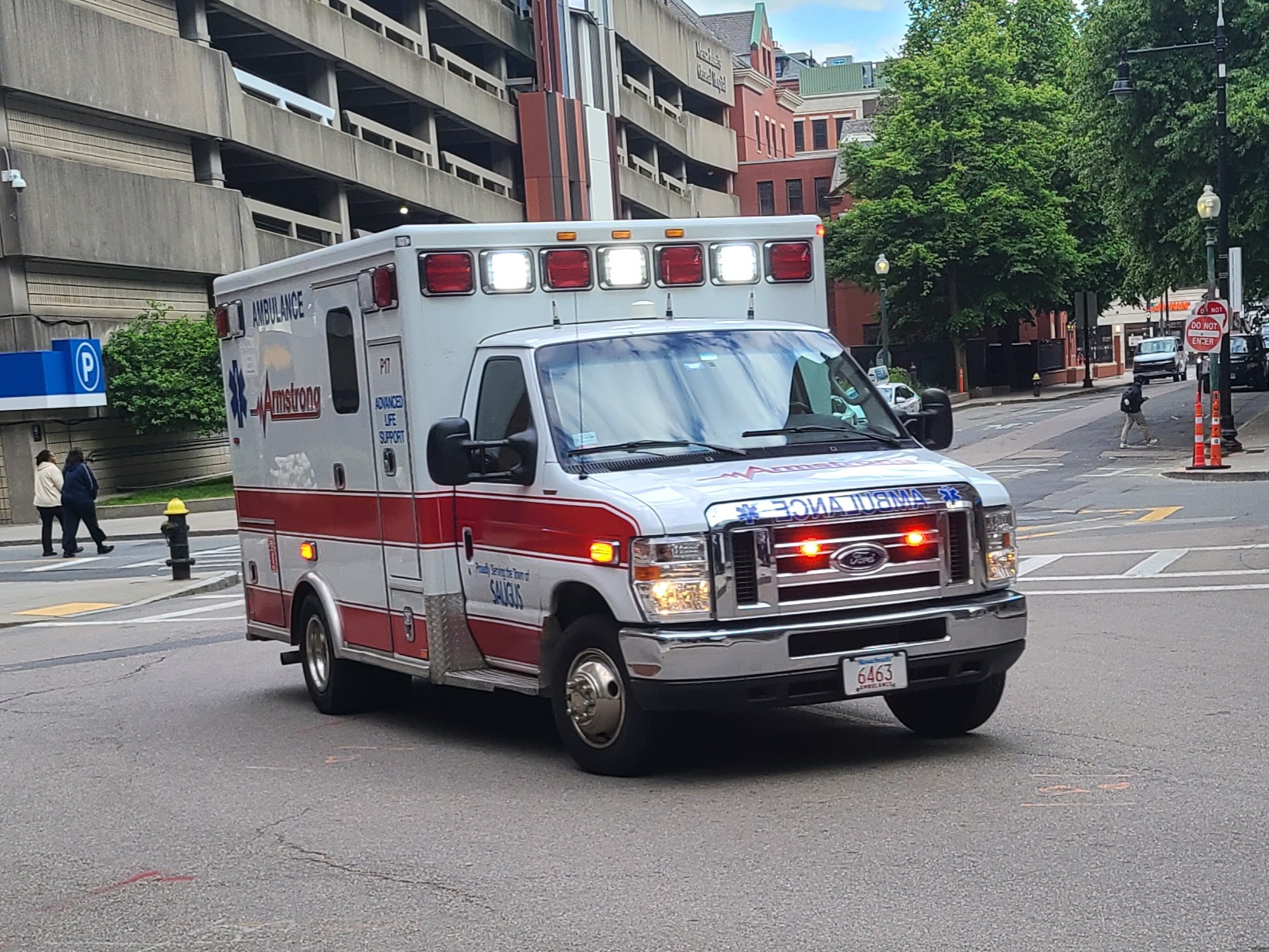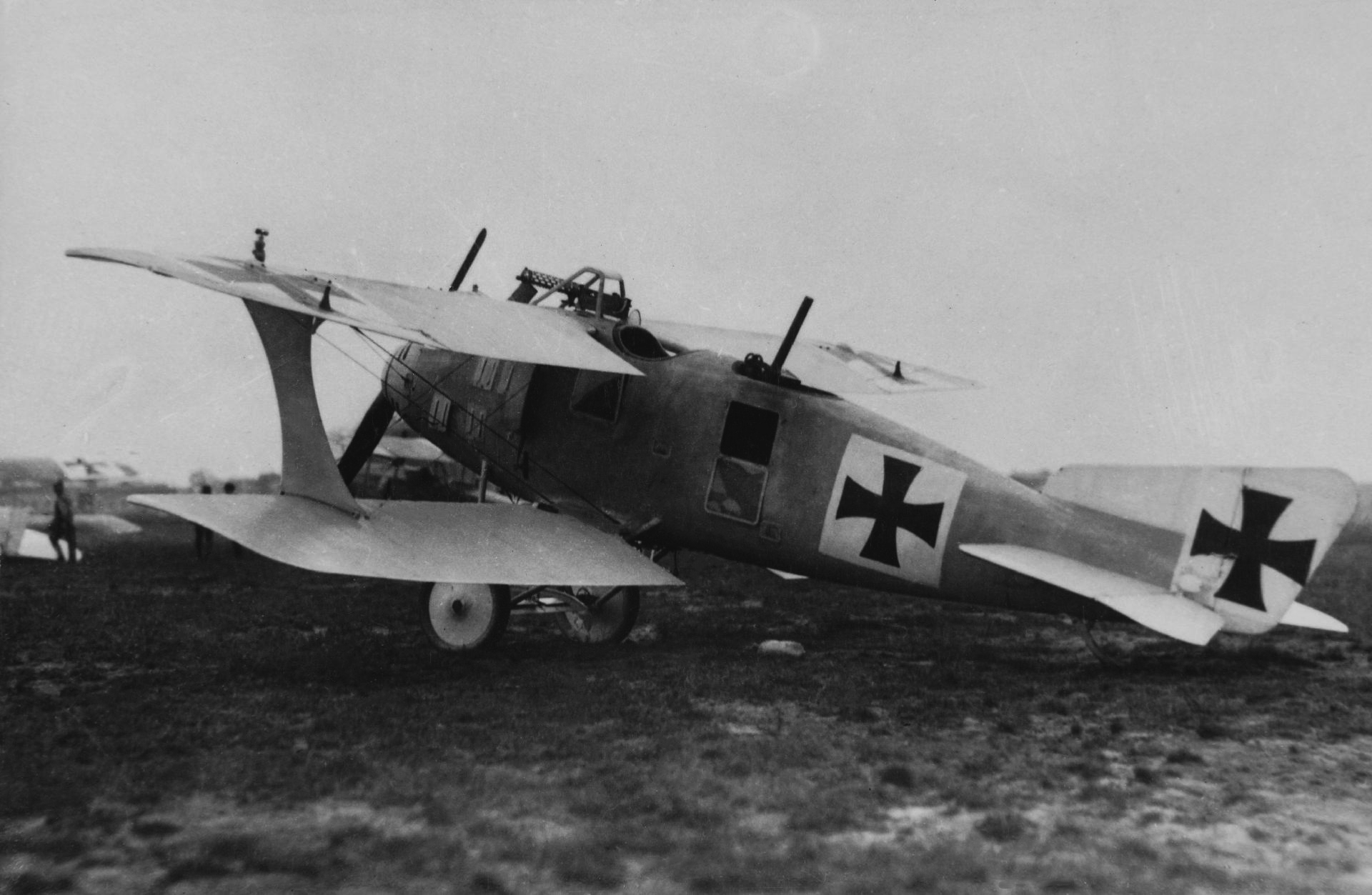|
RG-33
The RG-33 is a mine-resistant light armored vehicle initially designed by BAE Systems Land Systems South Africa (formerly Land Systems OMC), a South African subsidiary of BAE Systems. BAE Systems in the US extensively modified it with additional protection, new powertrain, and suspension systems. It was built in a number of locations including York, Pennsylvania. It was one of several vehicles being fielded by the US Armed Forces in Iraq under the United States MRAP program. Overview It is based on the RG-31, which itself is based on the Mamba APC, although it is roughly twice the weight of a RG-31. There are two variants, the standard RG-33 has four wheels and weighs 22 tons while the extended RG-33L variant has six wheels, can carry twice as many people in the back, and weighs 26 to 37 tons depending on the version. It was selected to be the sole producer of the US Army's $2.88 billion Medium Mine Protected Vehicle program. The initial contract is worth $20 million. B ... [...More Info...] [...Related Items...] OR: [Wikipedia] [Google] [Baidu] |
United States MRAP Program
United States MRAP program was created to produce Mine-Resistant Ambush Protected Vehicle for the country. In 2004, the TSG/FPI Cougar (MRAP), Cougar was designed by a British-led U.S. team, to U.S. Marine Corps requirements. It became the springboard from which the MRAP program was launched. Only two "armor quality" steel mills operate in the U.S.: the Russian-owned Oregon Steel Mills and the International Steel Group (now part of ArcelorMittal). The U.S. Department of Defense negotiated to ensure enough steel was available to keep pace with production. The U.S. military's MRAP program was prompted by U.S. casualties from improvised explosive devices (IED)s during the Iraq War. The United States Department of Defense MRAP program began in 2007 as a response to the increased threat of IEDs during the Iraq War. From 2007 until 2012, the MRAP program deployed more than 12,000 vehicles in the Iraq War and War in Afghanistan (2001–present), War in Afghanistan. Production of the first ... [...More Info...] [...Related Items...] OR: [Wikipedia] [Google] [Baidu] |
Medium Mine Protected Vehicle
The Medium Mine Protected Vehicle (MMPV) is a class of armored vehicles being procured by the US Army, similar to the MRAP program, which is being pursued by the US Army and the US Marine Corps. The Army's MMPV executive summary states: "The Medium Mine Protected Vehicle (MMPV) is a blast protected, wheeled vehicle platform that will operate in explosive hazardous environments to support emerging Future Engineer Force (FEF) Clearance Companies in route and area clearance operations, Explosive Hazards Teams in explosive hazards reconnaissance operations, and EOD companies in Explosive Ordnance Disposal operations." According to a US Army spokesperson: "What separates these programs are different schedules and sustainment requirements, resulting in different acquisition strategies and source selection criteria priorities. The MMPV... (Program of Record with emphasis on sustainment) and MRAP (emphasis on urgent fielding) have been in close coordination, especially from a hardware p ... [...More Info...] [...Related Items...] OR: [Wikipedia] [Google] [Baidu] |
Common Remotely Operated Weapon System
The Common Remotely Operated Weapon Station (CROWS) is a series of remote weapon stations used by the US military on its armored vehicles and ships. It allows weapon operators to engage targets without leaving the protection of their vehicle. The US military has fielded both the M101 CROWS and M153 CROWS II systems. System overview The CROWS system provides an operator with the ability to acquire and engage targets while inside a vehicle, protected by its armor. It is designed to mount on a variety of vehicle platforms and supports the Mk 19 grenade launcher, 12.7 mm M2 .50 Caliber Machine Gun, 7.62 mm M240B Machine Gun, and 5.56 mm M249 Squad Automatic Weapon. The system is composed of two parts: the mount which is fixed to the exterior of the vehicle and the control group. The mount is capable of 360° rotation and −20° to +60° elevation and is gyro-stabilized. The sight package includes a daylight video camera, a thermal camera and an eye-safe laser r ... [...More Info...] [...Related Items...] OR: [Wikipedia] [Google] [Baidu] |
Mine-Resistant Ambush Protected Vehicle
Mine-Resistant Ambush Protected Vehicle (MRAPV), also known as MRAP vehicle, is a type of armoured personnel carrier that is designed specifically to withstand land mines, improvised explosive device (IED) attacks, and ambushes to save troops' lives. Most modern infantry mobility vehicles also have a certain level of MRAP capabilities. History Specialized light armored vehicles designed specifically to resist land mines were first introduced in the 1970s by the Rhodesian Army, and were further developed by South African manufacturers starting in 1974 with the Hippo armored personnel carrier (APC).Heitman, Helmoed-Römer. ''South African Armed Forces''. Buffalo Publications 1990. p 44. The first step by the South African Defence Force (SADF) was the Bosvark, a Unimog fitted with a shallow mine-deflecting tub on the chassis to protect the crew. Then came the first generation of purpose-built vehicles, including the Hippo and various other light vehicles. They were essentially ar ... [...More Info...] [...Related Items...] OR: [Wikipedia] [Google] [Baidu] |
Ambulance
An ambulance is a medically-equipped vehicle used to transport patients to treatment facilities, such as hospitals. Typically, out-of-hospital medical care is provided to the patient during the transport. Ambulances are used to respond to medical emergencies by emergency medical services (EMS), and can rapidly transport paramedics and other first responders, carry equipment for administering emergency care, and transport patients to hospital or other definitive care. Most ambulances use a design based on vans or pickup trucks, though others take the form of motorcycles, buses, hearses, aircraft and boats. Ambulances are generally considered emergency vehicles authorized to be equipped with emergency lights and sirens. Generally, vehicles count as an ambulance if they can transport patients. However, it varies by jurisdiction as to whether a non-emergency patient transport vehicle (also called an ambulette) is counted as an ambulance. These vehicles are not usual ... [...More Info...] [...Related Items...] OR: [Wikipedia] [Google] [Baidu] |
Buffalo (mine Protected Vehicle)
The Buffalo is a Mine-Resistant Ambush Protected Vehicle built by Force Protection, Inc., a division of General Dynamics. It is the largest vehicle in Force Protection's line-up, followed by the Cougar HE MRAP and the Ocelot light protected patrol vehicle (LPPV). History The Buffalo vehicle was designed based on the successful Casspir vehicle, protected against land mines, of South African make. The Casspir is a four-wheeled vehicle, while the Buffalo has six wheels. Buffalo is also fitted with a large articulated arm, used for ordnance disposal. Both vehicles incorporate a V-shaped monohull chassis that directs the force of the blast away from the occupants. Buffalo is also now equipped with BAE Systems' LROD cage armor for additional protection against RPG-7 anti-tank rounds. Glass armor is sufficient at 6 inches thickness. Run-flat tires are mounted on all six wheels. The Buffalo combines ballistic and blast protection with infrared technology to detect the pres ... [...More Info...] [...Related Items...] OR: [Wikipedia] [Google] [Baidu] |
Land Systems OMC
Land Systems OMC is a South African company that produces a range of armoured vehicles which have been successfully exported and are in service with, amongst others, the U.S., Canadian and South African militaries. It is a division of Denel SOC LTD, located in Benoni, Gauteng. The OMC segment of the name is the initialism under which the Olifant Manufacturing Co. of South Africa was most commonly known during its existence. The original company was established specifically for the task of creating the Olifant tank for the South African Army. Ownership Reunert OMC's existence as an independent company was short-lived however, and early into its life it was taken over by Reunert, which subsequently turned it into a division called Reumech OMC. It was under this name that OMC saw its most prolific level of vehicle development, as combat operations during the Angolan Bush War necessitated a greater need for vehicle systems capable of being integrated with the very swift, flexible, ... [...More Info...] [...Related Items...] OR: [Wikipedia] [Google] [Baidu] |
V-hull
The V-hull is a type of vehicle armor design used on wheeled armored personnel carriers (APCs), infantry mobility vehicles, infantry fighting vehicles (IFVs) and MRAPs. The design originated in the 1970s with vehicles such as the Casspir used extensively during the South African Border War, Leopard security vehicle used in the Rhodesian Bush War and South African armored vehicle company Land Systems OMCs and Buffels. Design The purpose of V-hulls is to increase vehicle and crew survivability by deflecting an upward directed blast from a landmine (or Improvised Explosive Device) away from the vehicle, while also presenting a sloped armor face. By presenting its armor at an angle, it increases the amount of material a ballistic projectile must pass through in order to penetrate the vehicle, and increases the chance of deflection. V-hulls are incorporated in armored vehicle designs in several different ways. Many vehicles, such as the BAE Systems RG-33 incorporate the ... [...More Info...] [...Related Items...] OR: [Wikipedia] [Google] [Baidu] |
Mamba APC
The Mamba is a South African infantry mobility vehicle designed for internal security purposes. It was developed during the late 1980s to replace the Buffel in service with the South African military and security forces. The first models were built on a 4X2 Toyota Dyna chassis, which was subsequently replaced in production around 1994 by a more reliable Unimog chassis. All marks of the Mamba were designed to be mine-resistant and blastproof. Development history Mamba Mk1 The South African Army issued a requirement for a new armoured vehicle in 1987 capable of a wide variety of roles, namely border protection and internal security. The Mamba Mk1 was developed the following year and utilised the chassis of a Toyota Dyna 4X2 truck. A number were accepted into service between 1990 and 1994. Subsequent marks After 1994, the Mamba utilised a Unimog truck chassis for better off-road performance and ground clearance. The first units were derived from surplus Buffel vehicles. Its V-sha ... [...More Info...] [...Related Items...] OR: [Wikipedia] [Google] [Baidu] |
RG-31
The RG-31 Nyala is a 4×4 multi-purpose Mine-Resistant Ambush Protected Vehicle manufactured in South Africa by Land Systems OMC (a division of Denel SOC LTD), located in Benoni, South Africa and in Turkey by FNSS Defence Systems. It is based on the Mamba APC of TFM Industries. The RG-31 has become the multi-purpose vehicle of choice of the UN and other peacekeeping and security forces. It is finding favour with non-governmental organisations requiring a vehicle with a non-aggressive appearance to protect their personnel against land mines. Design The RG-31 is based on a UNIMOG chassis. It is built from a V-shaped all-steel welded armor monocoque hull and high suspension, typical of South African mine protected vehicles, providing excellent small-arms and mine blast protection. The vehicle is designed to resist a blast equivalent to two TM-57 anti-tank mines detonating simultaneously. The RG-31 is classified by the United States Department of Defense as a category 1 M ... [...More Info...] [...Related Items...] OR: [Wikipedia] [Google] [Baidu] |
Infantry Mobility Vehicle
An infantry mobility vehicle (IMV) is a four-wheel drive armored personnel carrier (APC) serving as an armed military transport, military patrol, reconnaissance or security vehicle. Those IMVs are distinct from 8-, 6-, and 4-wheeled APCs (such as the VAB), being closer in appearance to civilian vehicles. The physical appearance of the Infantry mobility vehicles are generally similar to the SUV, covered Pickup truck or Box truck. Examples include the ATF Dingo, Otokar Cobra II, Iveco LMV, AMZ Dzik, AMZ Tur, Mungo ESK, and Bushmaster. Most modern infantry mobility vehicles have certain level of Mine-Resistant Ambush Protected (MRAP) capabilities. IMVs were developed in response to the threats of modern warfare, with an emphasis on crew protection and mine-resistance. Similar vehicles existed long before the term IMV was coined, such as the French VAB and South African Buffel. The term is coming more into use to differentiate light 4x4 wheeled APCs from the tradi ... [...More Info...] [...Related Items...] OR: [Wikipedia] [Google] [Baidu] |
Monocoque
Monocoque ( ), also called structural skin, is a structural system in which loads are supported by an object's external skin, in a manner similar to an egg shell. The word ''monocoque'' is a French term for "single shell". First used for boats, a true monocoque carries both tensile and compressive forces within the skin and can be recognised by the absence of a load-carrying internal frame. Few metal aircraft other than those with milled skins can strictly be regarded as pure monocoques, as they use a metal shell or sheeting reinforced with frames riveted to the skin, but most wooden aircraft are described as monocoques, even though they also incorporate frames. By contrast, a semi-monocoque is a hybrid combining a tensile stressed skin and a compressive structure made up of longerons and ribs or frames. Other semi-monocoques, not to be confused with true monocoques, include vehicle unibodies, which tend to be composites, and inflatable shells or balloon tanks, both of whi ... [...More Info...] [...Related Items...] OR: [Wikipedia] [Google] [Baidu] |








